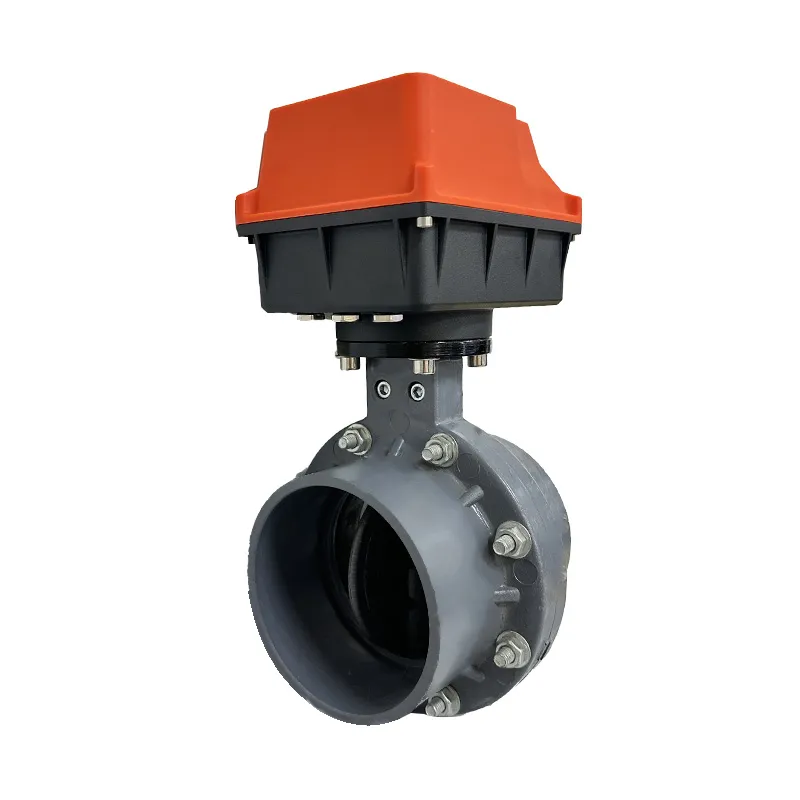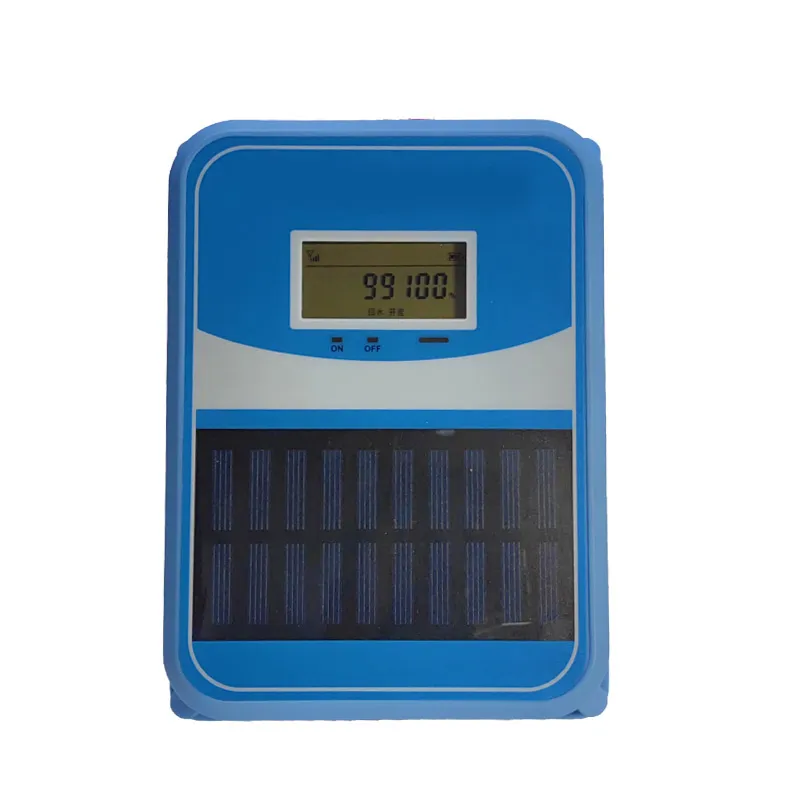Évitez que votre demande ne soit retardée dans la réponse, veuillez saisir votre WhatsApp/WeChat/Skype avec le message, afin que nous puissions vous contacter dans un premier temps
Nous vous répondrons sous 24 heures. En cas d'urgence, veuillez nous contacter par WhatsApp : +86 13188899036 ou WeChat : 0531-87968777. Vous pouvez également nous appeler directement au 0531-87968777.
* Nous respectons votre confidentialité et protégeons toutes vos informations. Nous utiliserons vos informations uniquement pour répondre à votre demande et ne vous enverrons jamais d'e-mails ou de messages promotionnels non sollicités.
HVAC and industrial pipes can choke on downtime, leakage, and sky‑high energy bills.
Every minute a valve sticks in the position fermée or fails to hit the correct débits, you risk product spoilage, safety alerts, and angry stakeholders.
UN motorized butterfly valve avec un electric actuator turns losses into savings by delivering precise, fail‑safe automation in one compact package.
Need the quick answer? A motorized butterfly valve replaces manual hand‑wheels with a powered electric actuator, giving engineers quarter‑turn, on‑off control or modulating flow at the push of a signal. It lowers energy costs, boosts reliability, and integrates seamlessly with modern BMS and SCADA systems.

motorized butterfly valve with electric actuator
A motorized butterfly valve is a quarter‑turn control valve whose disque rotates 0–90 ° to open or close the flow. Instead of a manuel lever, an electric actuator supplies torque to actionner the valve. The actuator receives a signal (0‑10 V, 4‑20 mA, or switching) and positions the disc with pinpoint precision. Because the disc sits in the center of the pipe, it reduces turbulence and head loss, boosting efficiency.
On a day‑to‑day basis, the actuator takes its marching orders from a building‑management controller. For a chilled‑water loop, it may modulate constantly to maintain set‑point temperature. In a chemical line, it might only open once a shift. Either way, valve response is smooth, repeatable, and—thanks to position feedback—fully transparent to operators.
| Partie | Matériel | Role |
|---|---|---|
| Disque | 316 Stainless / ductile iron | Blocks or allows flow |
| Siège | EPDM or PTFE | Zero‑leakage shut‑off |
| Corps | Cast iron, carbon steel, or stainless steel | Houses disc & seat |
| Actionneur | IP67 aluminum housing | Converts signal to rotation |
Need deeper specs? Our comprehensive smart valve library provides torque charts and wiring diagrams.
Electrical control isn’t merely “easier”—it changes how an entire plant reacts to load swings:
Real‑world proof comes from a retrofit at a 45‑story hotel. Swapping 48 globe valves for an electric butterfly valve netted a 12 % reduction in chiller power. Return on investment was nine months—verified by an independent energy auditor.
“We used to babysit isolation valves at 2 a.m. Now alarms show up in BMS, and the maintenance crew sleeps peacefully.” — HVAC Chief Engineer

Why Do Building Automation Engineers Prefer Electric Actuated Butterfly Valves
Because the butterfly design delivers big Cv values in a compact envelope, it shines wherever pressure drop costs money.
| Industry / Utility | Typique application | Why It Works |
|---|---|---|
| CVC commercial | Cooling‑tower isolation, heating loops | Zero stem packing leaks, on‑off control in seconds |
| Production d'électricité | Condenser water, auxiliary cooling | Minimal downtime, spring‑return fail‑safe keeps turbines safe |
| Water & Wastewater | Tertiary filtration, ozone lines | Rubber‑seated valves meet AWWA C504 for longevity |
| Alimentation et boissons | CIP acid return, sugar syrup | Smooth disc surface reduces turbulence and bacteria harboring |
| District Energy | 150 psi hot water | EPDM seat retains elasticity at 110 °C continuous service |
Public utilities are increasingly turning to smart automation. Our electric valve with LoRa telemetry sends hourly flow trends, making non‑revenue water a solvable problem.
Valve body style matters long before start‑up. Picking incorrectly can triple installation labor.
UN type de plaquette slips between two flanges and clamps tightly with through‑bolts. The advantage? A lighter shipping weight and shorter face‑to‑face dimension—perfect where every millimeter counts, such as retrofitting above a ceiling grid.
Lug bodies use tapped inserts. They allow one flange to be removed while the opposite side stays pressurized—a must for maintenance in fire‑protection or slurry systems. The trade‑off is weight and price.
| Style | Typique taille Gamme | Avantages | Inconvénients |
|---|---|---|---|
| Plaquette | DN50–DN600 | Compact, lightweight, cost‑effective | Needs full drain to remove |
| Lug | DN50–DN1200 | Dead‑end service, rugged alignment | Heavier, slightly costlier |
Need a dead‑end‑ready design? Check our vanne motorisée lineup for ductile‑iron options rated to 16 bar.
Choosing an actuator isn’t black magic—follow these three steps and you’ll nail it:
Have questions about fieldbus wiring? Our electric valve actuator range supports Modbus RTU, LoRa, and BACnet in one board.

Actionneur rotatif Lora
Selecting materials is where durability meets budget:
If you need a fast primer on chemical compatibility, our regulating‑valve guide cross‑references seat compounds vs. 36 common process fluids.
A shiny specification sheet means little without hard data. Start by logging these KPIs:
Managing KPIs monthly helps you plan predictive rather than reactive maintenance. A dashboard in your SCADA can highlight deviation trends—a green light for engineering teams to act before failures cost man‑hours.
Even the best valve misbehaves if installed poorly. Below is a step‑by‑step checklist. Keep it on your clipboard during commissioning.
Pro tip: Bleed air out of the hydraulic system before energizing the actuator—the trapped cushion can create false torque readings and trip overload protection.
Routine care is surprisingly simple:
| Symptôme | Likely Cause | Quick Fix |
|---|---|---|
| Valve stops mid‑stroke | Incorrect torque setting | Re‑program actuator for 20 % surplus |
| Position feedback erratic | Loose potentiometer cable | Reseat connector; tighten gland |
| High ΔP spike | Flow reversal | Install flow‑arrow label; adjust pump VFD |
Notice how each problem ties back to installation, not manufacturing. Performing a 15‑minute audit after start‑up can eliminate 80 % of lifetime call‑outs.
The City of San Rosa’s water‑treatment facility relied on 30‑year‑old manual valves. Breakdowns caused 27 hours of unplanned outages each month. Partnering with our plant, the utility installed 120 motorized butterfly valves equipped with LoRa telemetry.
Results at a glance
The success unlocked a second‑phase budget for sludge‑line upgrades, proving that smart automation is a virtuous cycle.
How fast can a motorized butterfly valve open?
Most units complete a quarter‑turn in 5–15 seconds, but high‑speed actuators can hit 2–3 s for critical on‑off duty.
Is an EPDM seat safe for potable water?
Yes. Our EPDM is NSF‑approved and free from phthalates, ensuring safe drinking‑water service.
Can I get a two‑way or three‑way configuration?
Absolutely. We supply both 2‑way and 3‑way assemblies for blend loops or diversion duty.
What makes stainless steel better than cast iron?
Stainless resists corrosion and survives CIP chemicals, whereas cast iron offers a budget choice for benign water.
Do electric butterfly valves offer manual override?
Every actuator ships with a hand‑wheel clutch so crews can override in a blackout.
How do I size the actuator?
Provide differential pressure, media type, and line size. Our team calculates torque and recommends an optional safety margin.